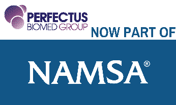Abstract
Objective:
The aim of this in vitro study was to investigate the transfer of viable Pseudomonas aeruginosa biofilm microorganisms following treatment with debridement tools.
Method:
The level of viable biofilm microorganisms transferred by debridement tools was compared following treatment that reflected the clinical practice of each product.
Results:
A significant level of microorganism transfer was seen in response to the mechanical debridement tool. Minimal transfer of microorganisms was seen when in vitro-established biofilms were treated with hydroresponsive wound dressing + polyhexamethylene biguanide (HRWD+PHMB, HydroClean plus). Less Pseudomonas aeruginosa was recovered from explants exposed to dressings compared with those exposed to debridement tools suggesting that there was less transfer of bacteria by dressings.
Conclusion:
The reduced transfer of viable microorganisms by HRWD+PHMB may be the result of significant binding and retention of microbes by the superabsorbent polymer within the dressing, together with enhanced sequestered bacterial killing within the dressing by polymer-bound PHMB. The high levels of microbial transfer/transmission seen for debridement tools suggests that, in the clinical setting, a significant level of bacterial spread over the wound surface and/or surrounding skin by these cleansing tools is likely.
